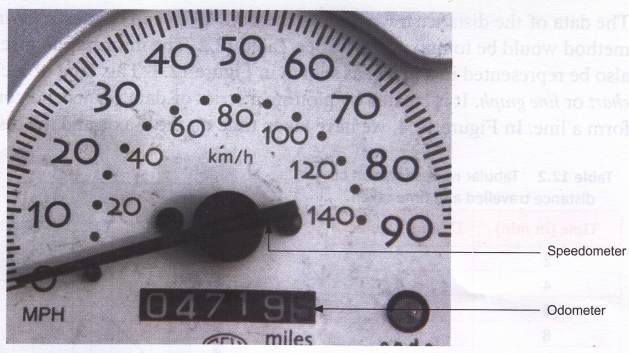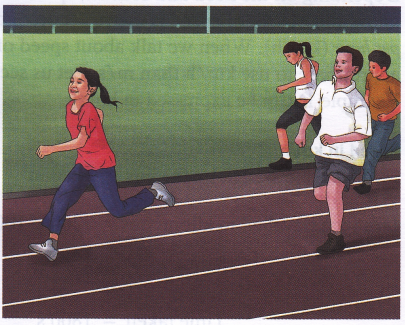What is Speed
- When we say a body moves fast (or slow) we refer to its speed.
- The speed of an object is defined as the distance travelled by it in unit time.
.The SI unit of speed is metre per second (m/s). - Therefore, an object that moves faster covers more distance in a second (unit time) as compared to an object that moves slower.
Different Units of Speed
Depending on the need and context, speed is measured in different units. As you already know, the SI unit of speed is metre per second. Another commonly used unit is kilometre per hour (km/h). When we talk about speed of aeroplanes and cars, it would be more appropriate to use km/h than m/s. Let us see how the speed of the school bus (given in Example 1) can be expressed in km/h.
Speed In km/h
Distance travelled by the bus = 7200 m
Distance travelled in kilometres = 7200 ÷ 1000 = 7.2km
Time taken = 1800 s
Time in hours = 1800 ÷ 3600 = O.5h
Therefore, speed of the bus = 7.2 ÷ 0.5 = 14.4 km/h
Speed in m/s can be easily converted to km/h by dividing the answer in m/s by 5/18 or multiplying by 18/5. Do you know how we got this?
1 km = 1000 m
1 h = 3600 s
1 km/h = 1000 m/3600 s
= 5/18 m/s
When a car (or any other vehicle) is moving, it is interesting to find out how fast it is moving. Have you seen a meter fitted inside a vehicle? In a car, the meter is fitted on the dashboard, and in scooters or motorcycles on the top. This is used to display the speed and distance travelled by the vehicle. The instrument/meter measuring the speed of the vehicle is called a speedometer. The distance travelled by the vehicle is given by an instrument called odometer. Both of them are usually fitted together. These instruments will give the reading of speed and the distance travelled at the same time.

Calculation of Speed
Shreya, Ronald, Sabina, and Kirit participated in a race. They took 20s, 22s, 25s, and 28s, respectively, to reach the finishing line. Who do you think ran the fastest and who ran the slowest?
We can calculate the speed of an object if we know the distance it travels in a given amount of time. Let us see how this is done.
 In the above example, let us say it was a 100 m race. Shreya ran the race in 20 s. What is Shreya’s speed? As speed is the distance travelled in unit time, Shreya’s speed can be calculated by dividing the distance she ran by the time she took to cover that distance.
In the above example, let us say it was a 100 m race. Shreya ran the race in 20 s. What is Shreya’s speed? As speed is the distance travelled in unit time, Shreya’s speed can be calculated by dividing the distance she ran by the time she took to cover that distance.
Therefore, Shreya’s speed is
Distance travelledTime taken to travel the distance=100 m20 s=5 m/s
Similarly, calculate the speed of Ronald, Sabina, and Kirit.
Let us consider one more example.
Example 1: A school bus covers a distance of 7200 m in 1800 s. Calculate its speed.
Solution: We know that speed is given by the distance travelled divided by the time taken.
Given: Distance travelled by the bus = 7200 m
Time taken = 1800 s
Speed=Distance travelledTime taken
=7200 m1800 s=4 m/s
In practice, very few objects travel at a constant speed for long. Your school bus may speed up and slow down many times on the way to school. To calculate the speed in such cases, we use the concept of average speed. Average speed is defined as the total distance travelled divided by the total time taken to travel that distance.
